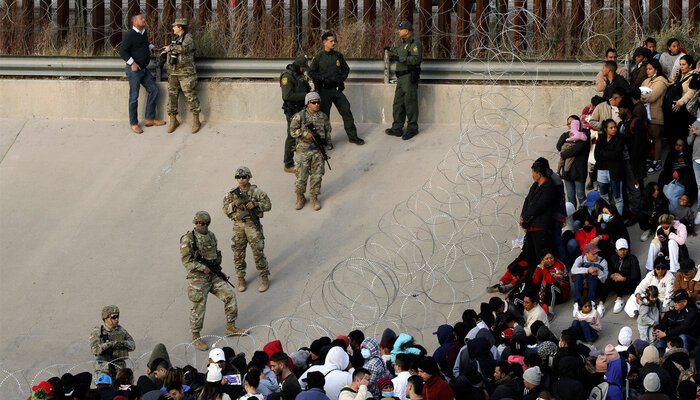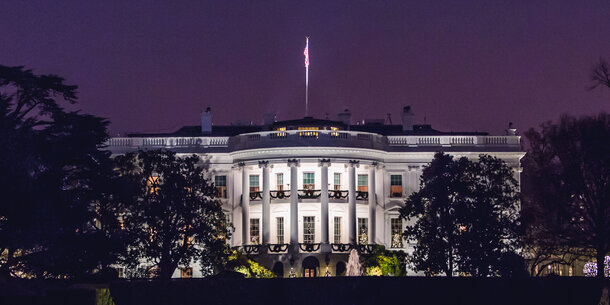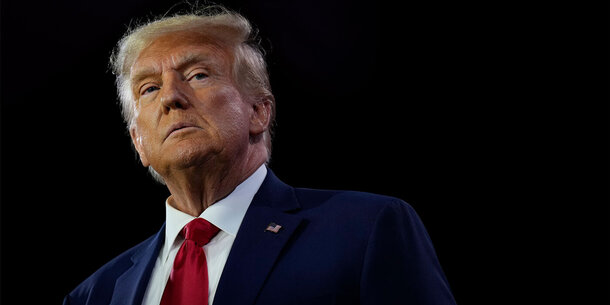This article first appeared in Democracy: A Journal of Ideas.
We live in a time of emergencies. In the past three years, a pandemic threatened our health, extreme weather threatened our communities, and Russian aggression threatened the world order. Perhaps the greatest crisis this nation faced during this period, though, was a President who sought to overturn the results of an election—and who toyed with using emergency powers for that purpose. The question, then, becomes: How do we give presidents the tools they need to address emergencies, without giving them the tools to dismantle democracy?
The answer lies in the Constitution’s balance of powers—a balance that has become dangerously skewed. In a functional system of emergency powers, Congress delegates extraordinary authority to the President, but retains the ability to curtail that authority if the President abuses it. In our current system, though, Congress plays far too weak a role. Presidents of both parties have taken advantage of this state of affairs, exploiting emergency powers to circumvent Congress on questions of policy. Without reforms to strengthen Congress’s hand, a future President could leverage these powers to undermine not just the policymaking process, but democracy itself.
Emergency Powers in Our Constitutional System
Emergencies are, by definition, unforeseen and unforeseeable. For that reason, the powers conferred on the government by existing, non-emergency laws might be insufficient to address them. Amending the law to provide greater powers could take too long—or do damage to principles held sacrosanct in ordinary times. Countries around the world have thus adopted emergency powers to give their heads of state a temporary boost in authority until the emergency passes or there is time to adapt the law to new realities.
Most countries today have constitutions that include special ground rules for emergencies. In many cases, they allow the head of state to override rights that the constitution gives to the people; a small few even allow the head of state to suspend the legislature. Under this model, the normal constitutional order itself may be set aside.
The United States has taken a different approach. As Justice Robert Jackson put it in 1952, the Framers “knew what emergencies were, knew the pressures they engender for authoritative action, knew, too, how they afford a ready pretext for usurpation. We may also suspect that they suspected that emergency powers would tend to kindle emergencies.” The Constitution thus includes no separate regime for emergencies, and it grants the President no express emergency powers.
To be sure, presidents have claimed inherent constitutional powers to take extraordinary action during emergencies. Such claims have underpinned some of the worst abuses of executive power in this country’s history, including the internment of Japanese Americans during World War II and the CIA’s torture of detainees at black sites after 9/11. Whether the President has any such powers, and how far they might reach, are questions the Supreme Court has never definitively resolved. But the Court has squarely rejected the notion that emergencies give the President license to defy an otherwise legitimate act of Congress.
Accordingly, presidents generally rely on Congress to provide them with the authorities they need to address emergencies. And Congress has been generous in doing so: Since the founding of the nation, Congress has passed hundreds of laws giving presidents special powers to address military, economic, and labor crises.
The National Emergencies Act—Strong Powers, Weak Safeguards
Since 1976, the most potent statutory framework for the exercise of emergency powers has been the National Emergencies Act (NEA). The law gives the President near-total discretion to declare a national emergency; there are no substantive criteria that must be met. The declaration then unlocks enhanced powers contained in more than 130 statutory provisions scattered across the U.S. Code.
Many of these powers appear reasonable and measured—for instance, the authority to waive weight limits on highways to facilitate the transport of jet fuel in a national emergency. Other provisions, however, are breathtaking in their potential for abuse. There are laws that allow the President to take over or shut down communications facilities, seize Americans’ assets without judicial process, and exert seemingly unlimited control over domestic transportation. Astonishingly, there is even a law that allows the President to suspend the prohibition on government testing of chemical and biological agents on unwitting human subjects.
Recognizing the risks inherent in these and other authorities, Congress included three provisions in the NEA intended to serve as safeguards against abuse. First, emergency declarations would automatically expire after a year unless the President renewed them. Second, Congress could terminate emergency declarations at any time through a so-called “legislative veto”—a law that takes effect without the President’s signature. Third, Congress would meet every six months while an emergency declaration was in effect to consider a vote on termination.
All three safeguards have proven impotent. Renewing emergency declarations requires nothing more than the President’s signature on an executive order; presidents routinely renew declarations for years or even decades on end. In 1983, the Supreme Court held that legislative vetoes are unconstitutional, leaving Congress powerless to terminate an emergency declaration unless it can muster a veto-proof supermajority—a near impossibility in today’s hyperpartisan political environment. And for more than 40 years, Congress entirely ignored the requirement to take periodic votes on existing emergency declarations. The vast powers available to the President under the NEA remain, but without the checks on misuse.
This dangerous state of affairs has produced remarkably few abuses. True, presidents have declared dozens of national emergencies for the purpose of invoking the International Emergency Economic Powers Act (IEEPA), a law that gives presidents broad powers to address “unusual or extraordinary” foreign threats to the United States through economic sanctions. In many cases, the circumstances giving rise to the declaration have posed no serious threat to the United States, let alone one that rises to the level of a national emergency. Indeed, when President Obama declared a national emergency in 2015 to impose economic sanctions on Venezuela, Administration officials hastened to reassure a worried public that the situation in Venezuela posed no danger to our nation. Nonetheless, Congress has readily acquiesced in such uses, happy to delegate much of the foreign sanctions portfolio to the President. Outside of IEEPA, emergency declarations have been rare and, until recently, reserved for true crises.
The Abuses We’ve Seen…
In 2019, Donald Trump shattered this norm of restraint, as he did so many others. Faced with a Congress that repeatedly refused to allocate the funds he had requested to build a wall along the southern border, he declared a national emergency. The declaration triggered a law that allowed him to divert funds from military construction projects. Weapons maintenance shops, aircraft rescue and firefighting stations, cyberoperations facilities—all were sidelined in favor of the border wall.
The declaration was a clear abuse of emergency powers. For one thing, there was no sudden, unforeseen development at the border; illegal border crossings at the time remained at lows not seen since the early 1970s. Worse, Trump issued the declaration for the avowed purpose of getting around Congress. Emergency powers are designed for unexpected situations that are unfolding too quickly and unpredictably for Congress to act. They are not meant to address longstanding problems, no matter how serious, or to implement long-term solutions. And they should never be used to pursue a course of action that Congress has had ample time to consider and has rejected.
The fake border wall emergency highlighted Congress’s weak role under the NEA. For the first time since the NEA’s enactment, Congress voted—twice—to terminate an emergency declaration, with 12 Republican senators crossing the aisle on the first vote. But Trump vetoed the resolution both times, and Congress was unable to muster a two-thirds supermajority to override the veto.
The conservative support for terminating the declaration—and, soon thereafter, for emergency powers reform—was surprising to some. It shouldn’t have been. Even lawmakers who staunchly supported the border wall were galled by Trump’s disregard for Congress’s spending authority. Moreover, these conservatives immediately saw the potential for future Democratic presidents to follow in Trump’s footsteps, harnessing emergency powers to enact progressive policies that might lack sufficient support in Congress.
They didn’t have long to wait. In 2022, the Biden Administration invoked the HEROES Act, one of the authorities that become available in a national emergency, to forgive up to $20,000 in student loan debt held by people with incomes under $125,000. Biden relied on the COVID-19 national emergency declaration, citing the economic hardship that the pandemic inflicted on borrowers.
Student loan debt, like unlawful immigration, has been a serious problem for decades—one that presidential candidate Joe Biden pledged to address. COVID-19 might well have made it worse, but Biden’s directive to forgive student loan debt went beyond providing temporary relief during the COVID crisis. Moreover, by the time Biden invoked emergency powers, COVID itself had been with us for well over two years; during that time, Congress considered multiple bills to forgive student loan debt, but it did not enact any of them. Under these circumstances, it is hard to escape the conclusion that Biden leveraged emergency powers to bypass Congress on a key policy goal.
…and the Abuses We Might See
The most alarming abuses, though, are the ones that didn’t happen. After Trump lost the 2020 election, his allies urged him to deploy a wide range of emergency powers—under the NEA and other laws—to hold on to the White House. Some suggested that he use the Insurrection Act, a law that allows the President to deploy the military during domestic emergencies, to suppress any resistance to his remaining in office. At least one of Trump’s associates proposed that he invoke IEEPA to seize voting machines, based on false claims that Dominion Voting Systems, a foreign-owned corporation that sold voting equipment and software used in the 2020 election, had tampered with votes. On January 6, 2021, as Trump supporters stormed the U.S. Capitol, there was a real risk of Trump invoking the Insurrection Act—not to keep the peace, but to prevent Congress from certifying the results of the election.
Many of the emergency powers that Trump’s supporters wanted him to exercise were fictitious. (There is no power to “suspend the Constitution,” as some proposed.) And thankfully, no emergency power allows the President to overturn election results. But if Trump had attempted to use emergency powers for that purpose, his actions could have delayed the vote certification, stoked distrust over the election results, and sowed chaos and violence even beyond what occurred on January 6.
It is unclear why Trump did not choose this route. Opposition from key top officials, including the acting secretary of defense and the chairman of the Joint Chiefs of Staff, might have been a factor. If Trump is elected in 2024, he will no doubt take care to appoint officials who are unencumbered by pesky loyalties to the Constitution. Moreover, he, or any other future President with autocratic ambitions, might dip into the emergency powers toolkit earlier in the election cycle—conjuring fake emergencies to justify interfering with communications systems, transportation, public assemblies, or organizational financing in ways that could affect the election results.
The Solution: Putting Congress Back in the Game
Shortly after Trump declared a national emergency in 2019, lawmakers began introducing bills to reform the NEA. The central reform in most of these bills is a congressional approval requirement: Presidentially declared national emergencies would automatically expire after 30 days unless Congress approved them using expedited procedures that would prohibit filibusters in the Senate and allow any member to force a vote. Approved declarations could stay in place for up to a year, but any subsequent renewals would again require congressional approval. Under this approach, presidents would retain maximum flexibility when it is most needed—in the immediate throes of a crisis—but Congress could serve as a backstop in the event of presidential overreach or abuse.
A congressional approval requirement would have another benefit. In recent decades, Congress has abdicated much of its power, allowing the executive branch to assume the responsibility of policymaking—and the political risk that comes with it. There are signs that lawmakers might be ready to claw back some of their authority: Congress passed resolutions during the Trump Administration (which Trump vetoed) to end U.S. support for Saudi Arabia’s military operations in Yemen, prevent the use of military force against Iran, and curtail arms sales to Saudi Arabia. Nonetheless, congressional inertia remains a potent force. Requiring approval of emergency declarations would force lawmakers to play their constitutionally assigned role, rather than sitting on the sidelines and heckling any presidential actions that proved unpopular with their constituents.
This approach to reforming the NEA has broad bipartisan appeal. Even though it was first put forward by Republican Senator Mike Lee of Utah, Democrats incorporated it into their flagship democracy reform bill, the Protecting Our Democracy Act, which passed the House in December 2021 and was reintroduced in July of this year. It also comprises one part of a bipartisan bill to reform national security powers, which uses a similar mechanism to bolster Congress’s role in the areas of war powers and U.S. arms sales. And it has been endorsed by former Obama Administration official Bob Bauer and former Bush Administration official Jack Goldsmith, whose book After Trump cites reforming emergency powers as one of the key steps necessary to shore up democracy’s guardrails.
Checks, Balances…and Climate Change
Despite its popularity, this reform remains stalled in Congress. One possible reason for this is the urgent need for action on climate change. Many progressive lawmakers and advocates have urged President Biden to address climate change by declaring a national emergency—a declaration the current Congress would be unlikely to approve if a congressional approval requirement were in place. (COVID-19 has highlighted another area where progressives favor strong executive power. Reforming the NEA would have little effect on presidents’ ability to address pandemics, however, as most of the relevant federal emergency authorities are provided by the Stafford Act and the Public Health Service Act—laws that do not fall under the NEA framework.)
The inclination to use emergency powers for climate change action is understandable. After all, climate change poses the greatest threat humans have ever faced. And yet, counterintuitively, it checks none of the boxes for the appropriate use of emergency powers. It is not a sudden, unforeseen development. (Any such claim would greatly annoy Al Gore.) It cannot be addressed through a temporary, short-term exercise of presidential power; it will require permanent changes to how we produce and consume energy. And Congress has had years to consider how, or whether, to respond. Indeed, the reason advocates began pushing for an emergency declaration was because of prolonged congressional inaction.
On a more practical note, emergency powers cannot solve the problem at hand. None of the 130-plus provisions available to presidents in a national emergency were written with climate change in mind. Unsurprisingly, then, none confer the authorities—or, just as important, the resources—necessary to address climate change. Advocates have identified a few provisions that could be pressed into service, but some (such as the power to suspend certain offshore drilling leases) would address only isolated aspects of the problem, while the more potent ones (such as the power to control domestic transportation) are either so vague or so ill-fitting that the current Supreme Court would undoubtedly block their exercise.
Even the staunchest advocates of declaring a climate emergency acknowledge that a full solution to climate change will require congressional action. Yet such action could be jeopardized by a President declaring a national emergency for the clear purpose of circumventing Congress. It took months of delicate negotiations for the Biden Administration to secure passage of the Inflation Reduction Act (IRA) in August 2022. The law provides $369 billion over the next ten years to combat climate change—resources that no emergency power could have made available. Had Biden declared a national emergency in the spring of 2022 to get around the holdouts in Congress, as activists were urging him to do, it surely would have been the death knell for the IRA.
In short, despite the undeniable gravity of the threat, using emergency authorities to address climate change would be playing fast and loose with executive power with comparatively little benefit. That path comes with perils of its own, and it is unlikely to lead us to the climate solutions we so desperately need.
Of course, threading the needle between empowering presidents to handle true emergencies and ensuring that presidents cannot use these authorities for power grabs is no easy task. When the Framers omitted presidential emergency powers from the Constitution, they manifested their belief that the dangers posed by insufficiently constrained executive power are greater than any benefits we can hope to obtain from a system of weak checks. The threats our democracy faces today reinforce that conclusion. Balancing power among three branches of government can slow progress on important issues—but it remains the best way, and perhaps the only way, to preserve our democracy, our liberties, and our security.






